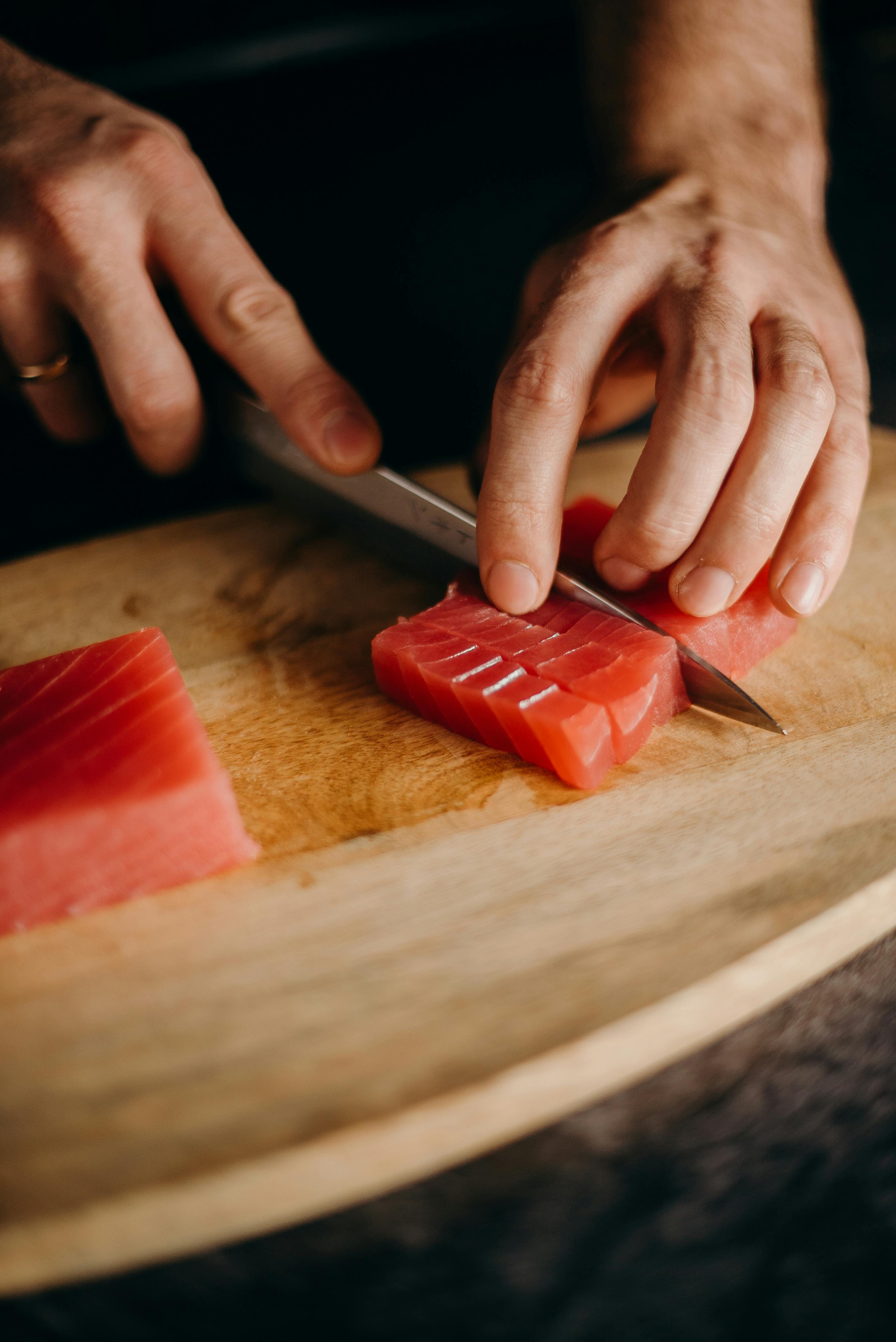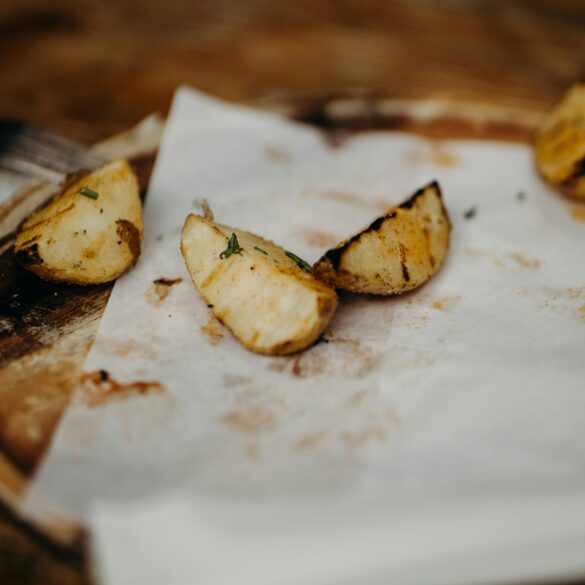Switzerland: Simple Chef Secrets for the Best Zürcher Geschnetzeltes
There’s just something about Swiss food that feels both familiar and entirely new, isn’t there? Before I ever set foot in Zürich’s winding, sparkling old streets, I always imagined Swiss cuisine as mostly cheese fondue and chocolate, the sort of rustic fare you see on travel board posters. Turns out, that’s selling it short—big time. Take Zürcher Geschnetzeltes, that creamy veal-and-mushroom dish: it’s not just a local favorite, it’s basically a culinary rite of passage in Switzerland1. Funny thing is, I used to lump it in with “hotel food” until a chef friend (who buzzes between Bern and Zürich kitchens) invited me to witness how the pros do it. What I learned wasn’t obvious, and honestly, nobody in a basic cookbook ever tells you the small stuff that makes a difference.
Whether you’re a passionate home cook trying to master European classics, a culinary pro searching for authentic Swiss techniques, or just someone itching to taste what Zürich locals call “comfort on a plate,” this guide is for you. I’m weaving in expert chef secrets, personal mishaps, direct lessons from professionals, and cultural stories—for the sort of practical, honest take that actually gets results. We’ll dig into ingredient selection, cooking methods, seasonality, classic mistakes (you need to hear one of mine), plus actionable tips for converting this dish into everything from a weeknight comfort to a restaurant-level showstopper.
Zürcher Geschnetzeltes: The Swiss Culinary Icon
So, what exactly is Zürcher Geschnetzeltes? Honestly, I’ve asked more than enough Swiss friends and every single one has their own “best way,” but the basic blueprint is simple: sliced veal (sometimes with chicken or pork), sautéed with onions and mushrooms, then finished in a velvety white wine cream sauce2. It’s usually served with Rösti—a golden, crispy Swiss potato pancake. A staple in Zürich’s bistros since the early 20th century, the dish isn’t just a feature—it’s a statement. If you order it outside Zürich, there’s still a not-so-subtle comparison swirling around (“But Zürich does it best” is a refrain in Swiss kitchens).
What’s curious is that such a “simple” dish actually reflects a huge chunk of Zürich’s culinary history. The earliest records tie it to 1920s hotel menus3, but even today, newer chefs bend the tradition, adding everything from wild mushrooms to regional cheeses. I go back and forth on whether the innovative versions really capture the same soulful comfort (and the jury’s still out). Yet the local pride in this dish is unmistakable; it’s become a symbol of Zurich’s blend of urban sophistication and countryside roots.
Professional Chef Techniques: Why the Little Things Matter
Here’s the thing nobody admits in a tourist recipe: most amateur cooks get the feel of Zürcher Geschnetzeltes wrong. The dish is all about timing, temperature control, and the fundamental Swiss discipline of “never overcooking.” Back when I first tried making it myself, I cooked the veal straight through with everything else, thinking, “it’ll all blend together.” Not quite! What I should have done? Sear the veal fast and set aside before building the sauce. This small detail is what restaurant chefs obsess over: it keeps the meat tender and lets you build flavor layer by layer—like painting.
“In Zürich, Geschnetzeltes isn’t just a recipe. It’s a test of a chef’s subtlety—the difference between good and sublime comes down to seconds in the pan and the way you taste the sauce.”
What really strikes me is how Swiss chefs intentionally break steps into small, measurable tasks—a sort of culinary mindfulness. The sautéed onions go first for just the right edge, then mushrooms, then deglazing with wine and stock. Each layer is given a moment to shine, and the sauce builds complexity without overwhelming the veal’s delicate flavor4. These details aren’t minor; they’re what elevate the dish from “fine” to “outstanding.”
The Swiss Pantry: Choosing Ingredients Like a Local Chef
Let’s talk ingredients—a topic I’ve never stopped learning about. The Swiss are, by and large, absolutely meticulous when it comes to sourcing. Top chefs in Zürich swear by using veal from local farms (ideally “Kalbfleisch,” or milk-fed calves)—not just for flavor, but for that signature tenderness5. Quite often, you’ll see restaurants proudly displaying their butcher’s name on the menu; that’s how serious they are about provenance. For mushrooms, button mushrooms are the classic, though autumn brings porcini and morels for richer, seasonal twists.
Swiss cream is another standout. If you can source “Vollrahm” (full-fat cream), you’re winning already—a detail imported cream never seems to match. It’s not just about richness, but the subtle dairy sweetness that Swiss cows impart thanks to their Alpine feed. The onions are white, sliced thin to melt away in the sauce. White wine? Dry, Swiss varieties add bright acidity, though I’ve learned (sometimes painfully) that a French Chablis or an Italian Pinot Grigio will usually play nice in a pinch.
- Veal: Sliced, milk-fed, tender, never tough.
- Mushrooms: Button for classic; porcini/morels for autumn.
- Cream: Full-fat Swiss preferred, substitute with closest regional option.
- Onion: White, sliced thin.
- White wine: Dry, not sweet, ideally Swiss.
- Stock: Veal or chicken; homemade if possible.
- Butter: Swiss or European, unsalted.
Step-by-Step Mastery: Making Zürcher Geschnetzeltes the Professional Way
Here’s where opinions get strong. My early attempts were clumsy—overcooked veal and gloppy sauce—but after guided practice in Zürich, I learned simplicity and speed are everything. Below, I’m sharing the step-by-step approach the pros use; it’s the method that actually works no matter your experience level.
- Prep the veal—Slice thin, against the grain, 2–4 cm strips. Pat dry for best sear.
- Sear and set aside—In hot butter, brown veal quickly (no more than 1 minute). Remove from pan.
- Sauté onions, then mushrooms—Add both in turn, letting each build flavor. Deglaze with wine.
- Make the sauce—Pour in stock, simmer, then swirl in cream. Reduce to desired thickness.
- Return veal to the pan—Finish gently; do not boil. Taste, adjust salt and pepper.
- Finish and serve—Swirl in butter, plate with fresh herbs, serve immediately with Rösti.
This layering of steps is core to Swiss cooking discipline. What’s fascinating is the rhythm: sauté, build, taste, refine, finish. It’s almost meditative. I’ve observed seasoned chefs taste as they go (sometimes six or seven times) and refuse to rush the reduction process—a patience I’m still working to master. If you’re quick to the heat, everything turns rubbery. If you’re slow, the cream splits. Precision wins.
| Step | Professional Tip | Mistake to Avoid | Timing |
|---|---|---|---|
| Searing | High heat; don’t crowd pan | Overcooking—results in tough veal | ~1 min |
| Sauté Onions | Slice thin; sweat not brown | Caramelizing; overpowers flavors | 2 min |
| Deglaze w/Wine | Scrape pan for flavor | Too much wine—too acidic | 30 sec |
| Cream Sauce | Simmer gently, whisk often | Boil—cream splits | 3-5 min |
| Finish w/Butter | Mount off heat | Add too early—sauce greasy | Instant |
Perfect Pairings: Rösti, Wines, and Seasonal Variations
The “right” side dish has sparked more than a few debates at Swiss tables. For me, nothing beats classic Rösti—thin, crispy, golden, anchoring the tender veal and cream sauce. But chefs in Zürich increasingly get creative: seasonal greens, wild mushrooms, or parsnip purée for a wintery edge. Talk about pairing wines and the conversation goes deep. Swiss Chasselas is traditional, but I’ve seen more restaurants pairing with Pinot Blanc or even lighter reds—anything that doesn’t fight the sauce’s richness7.
- Classic: Rösti (potato pancake)
- Seasonal: Roasted root vegetables, wild greens
- Wine options: Chasselas, Pinot Blanc, Burgundy, light reds
- Garnishes: Fresh herbs (parsley, chives), lemon zest

Common Pitfalls & How to Fix Them
Let’s get honest about mistakes. When trying to nail Zürcher Geschnetzeltes, even pros trip over classic blunders. I’ve burned the mushrooms, overcooked the veal (twice), and once forgot to taste the sauce until the last second. Actually, let me clarify—the first two attempts were total disasters, but the third time, I started keeping notes like a real chef. Here’s what I’ve learned that you won’t find in glossy recipe books:
- Overcrowding the pan—Kills the sear. Sear in batches or use a large skillet.
- High heat too long—Toughens veal. Sear quickly, remove promptly.
- Undercooked onions—Spicy and crunchy, not what you want. Sweat fully.
- Too much stock—Watery sauce. Reduce until thick and glossy.
- Pouring cream in early—Breaks the sauce. Add cream last, simmer gently.
- Forgetting butter mount—Sauce isn’t silky. Always swirl into warm sauce at the end.
It’s not just about the food. Swiss chefs talk a lot about “the mood in the kitchen.” Rushing, skipping steps, or panicking almost always results in something Swiss diners will spot immediately—a lack of refinement. Mental state matters. Oddly enough, my most successful experiments happened when I slowed down, tasted more often, and treated each stage respectfully.
Pro Chef Interviews & Key Professional Wisdom
“Great Geschnetzeltes is not about flashy plating. The challenge is making something so simple taste refined. Swiss food is direct—that’s its magic.”
Professionals obsess over temperature, sauce thickness, and texture for a reason. Last month, during a restaurant kitchen tour, I watched a chef spend three minutes adjusting sauce consistency, tasting every thirty seconds. Honesty? I used to think this was “too much.” Now, I see it as essential. The difference between amateur and expert is often a matter of patience and precision. And they’ll tell you—perfection is always a moving target.
| Chef Wisdom | Lesson | Personal Takeaway |
|---|---|---|
| Taste Often | Build flavor gradually, don’t rush steps | Interval tasting made me catch seasoning errors early |
| Prep Like a Pro | Slicing precisely gives better texture | Upgrading knife skills improved presentation |
| Sear, Don’t Stew | Don’t let meat stew; quick sear then rest | Stopped overcooking by changing order |
| Sauce Management | Simmer carefully—never boil | Avoided split sauce by patience |
Sound familiar? I bet even seasoned cooks have stories about “almost perfect” dishes that failed on a technicality. Keep in mind, Zürich’s top chefs started somewhere; their triumphs are built on trial, error, and mindful adjustment8. That’s encouraging. And it means there’s room for improvement, no matter your starting point.
Modern, Sustainable Adaptations
Meanwhile, Swiss food culture has been shifting toward sustainability and creative adaptation. Younger chefs and home cooks alike now experiment with variations—using chicken (for affordability or animal welfare), subbing in oat cream for dairy-free versions, or building mushroom-heavy alternatives for vegetarians9. Let’s step back for a moment: tradition is important, but Switzerland is a modern culinary hub. The Swiss government’s push for organic, locally sourced meats means most urban kitchens are experimenting with non-traditional suppliers10.
- Chicken or pork for cost and sustainability
- Vegetarian version with wild mushrooms, oat cream
- Vegan sauce options using cashew cream
- Gluten-free Roux for sauce thickening
What excites me is how flexible Zürcher Geschnetzeltes has become. I used to think the classic version was “untouchable”—but watching Swiss chefs create modern, lighter, or vegetarian versions with respect for the core process, I realised that culinary evolution is the Swiss way11. Now, I’m partial to experimenting each season—trying morels in spring, root vegetables in autumn, oat cream in winter. Change doesn’t mean compromise; it means adaptation.
Zürcher Geschnetzeltes FAQ
- Can I use beef or chicken instead of veal? Yes—chicken is popular among modern chefs. Adjust cook time (chicken cooks fast).
- What mushrooms work best? Button for classic; porcini for richer taste. Wild mushrooms add seasonal aroma.
- How do I avoid cream splitting? Low heat, add late, whisk continuously. Don’t boil!
- Is Rösti necessary? Not strictly—try polenta, rice, or rustic bread as alternatives.
Conclusion: Mastering Zürcher Geschnetzeltes—A Swiss Culinary Journey
From my own experience shadowing Zürcher chefs, I’ll be completely honest—the “perfection” everyone talks about is an evolving journey. Sure, you’ll see glossy food magazine photos, but the feeling in Swiss kitchens is different. It’s respectful, process-driven, and full of quiet (sometimes not-so-quiet) debates about details nobody outside Switzerland ever notices. What’s really struck me, again and again, is the professional humility: chefs correcting and adjusting without ego, often learning from each other no matter how many times they repeat this dish.
The real magic of Zürcher Geschnetzeltes is not the creamy sauce or simple ingredient list—it’s the intentional Swiss way of careful cooking. You layer flavors, taste often, work quickly but intentionally, and mount your sauce with butter only when everything else is perfect. I go back and forth between trying hyper-traditional recipes and gorgeous modern variations. There’s something thrilling about seeing sustainable, vegetarian-focused Swiss food take root—and Zürich’s culinary community is right at the center of it13.
References & Further Reading



